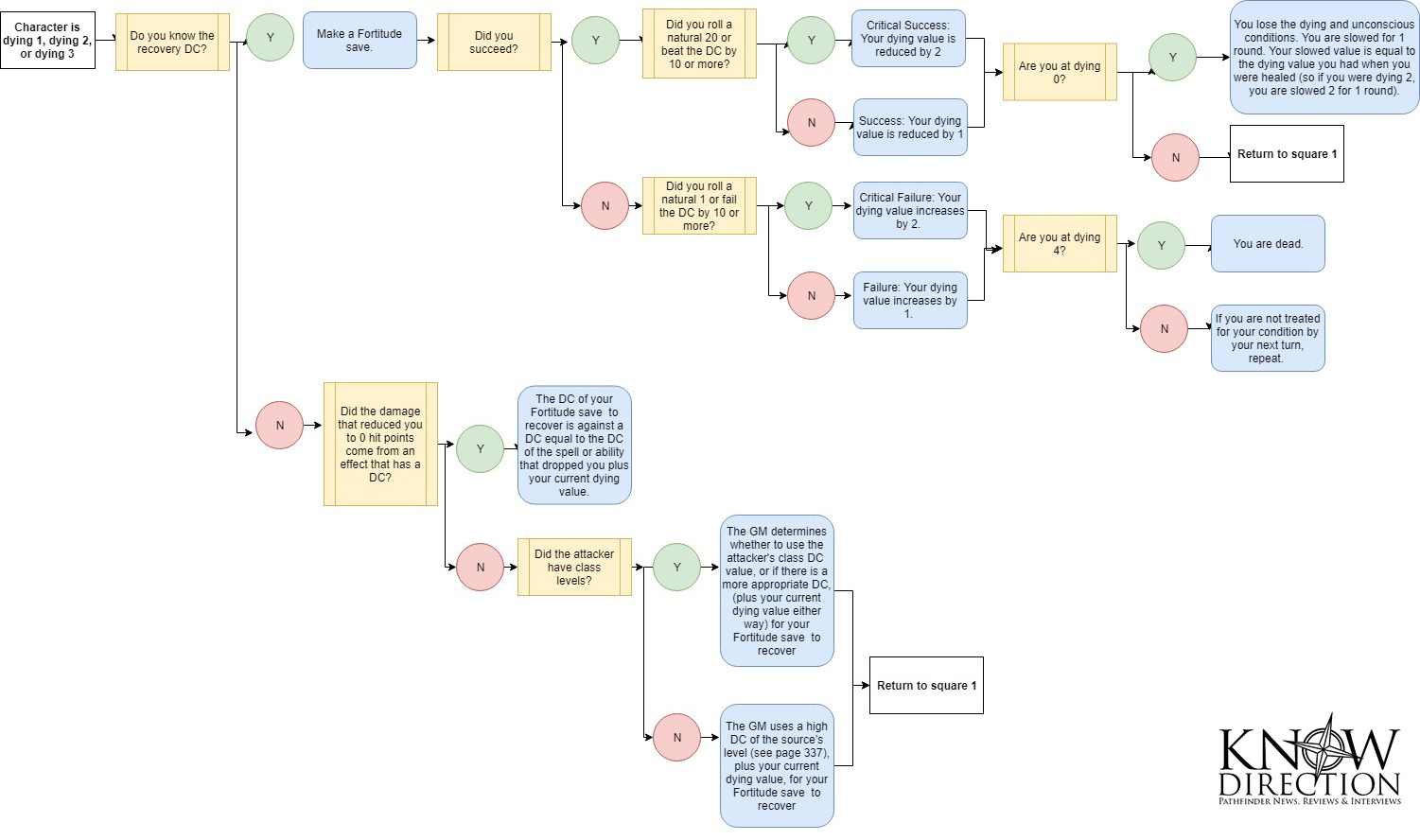Anyone who listened to the first episode of Doomsplay, Know Direction’s Actual Play podcast of the Pathfinder Second Edition Playtest module Doomsday Dawn knows that things were running smoothly until Alex’s paladin was reduced to 0 hp.
The new dying system grinded the session to a halt. We didn’t even fully dive into the rules as we had healers handy with spells to deal with his conditions. Still, the combination of changes to a rule we knew very well, the granularity of the new system, and some breaks from expectation (specifically, that the dying condition and unconscious conditions must be dealt with separately) meant our noses were in our books.
Evidently our experience wasn’t exclusive as before the first part of the playtest was done, Jason Bulhman publicly announced that the dying rules would be updated soon. This Monday, a new update was indeed released, and it mostly centered on the new dying rules. The update addresses some of the concerns, but it’s still extremely granular. To prevent a similar slow down, and to keep track of which rules I remember are post-update, I’ve put together a couple of handy flowcharts.
So You’ve Lost Your Last Hit Point
Unlike in Pathfinder first edition, but consistent with the pre-update version of the second edition playtest, 0 hp is as low as your hp can go. Once you’ve reached 0 hp, you are unconscious and could be dying, possibly even quite badly. To figure out how badly you are dying, consult the above flow chart, starting with the Character drops to 0 hp square.
So You’re Dying
Dying is where it gets trickier. Death (and all tiered conditions) is still measured in 1, 2, 3, and 4, four being death. What’s more likely to trip up a session is determining the DC of the recovery save. This hasn’t changed much, if at all, from the pre-update rules, but as you can see they can be involved. Threats do not have a universal lethality equation, effects do. Even then, determining the lethality (ie, the DC to recover if these attacks reduce a character to 0 hp) of these effects sometimes relates back to the threat and the circumstance. The example being that if a wizard drops a character with a lethal melee attack they shouldn’t use their key ability (Intelligence) to determine how lethal their quarterstaff shot was. So step 1 of the Dying character flow chart is a flowchart of its own to determine the Fortitude save DC. Once that’s established, it’s a set number, even if the variables that went into calculating that DC change.
Two final notes:
- I apologize for the wonky arrows on the above flow charts.
- Fans of my GM like a PM series who are waiting for the third installment, I apologize. Hopefully it will be the subject of the next Behind The Screens.









Yuck, I can’t imagine how that system contributes to the fun of the game.
And number conditions make me sad.